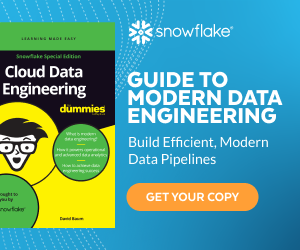Data Exploration: The First Step in Data Analysis
Data exploration, where data analysis begins, allows data teams to better understand a data set they’re working with — the data set’s characteristics and patterns, and the potential insights that might be gleaned from it. By identifying the relationships within data sets, teams can build hypotheses and make informed decisions about the appropriate methods to use for deeper analysis. Data exploration is a crucial first step because it lays the foundation for more advanced analytics, modeling and interpretation.
What Is Data Exploration?
Data exploration is the preliminary investigation of a data set. It provides a wide-angle view of the data and lays the groundwork for the in-depth analysis that follows. Using a combination of data visualization tools and statistical methods, data analysts work to understand the data’s primary characteristics, including its quality, range and scale. During the exploratory phase, patterns, correlations and points for further inquiry emerge. Popular Python libraries such as Pandas, Matplotlib and scikit-learn provide powerful data exploration and visualization capabilities.
Data exploration vs. data discovery
Although the terms data exploration and data discovery are often used interchangeably, they’re not synonymous. Data discovery follows data exploration, taking place after the data has been prepared and organized. While data exploration focuses on understanding a dataset's characteristics and patterns, data discovery involves using the prepared data to answer business questions. Data discovery may include data exploration as a subset, but it goes beyond the initial exploration phase.
Benefits of Data Exploration
The information gathered during data exploration provides direction for the rest of the analysis process. Dedicating the time needed to properly explore the data at the outset pays dividends later on, resulting in more accurate, relevant analysis and enhanced insights.
Develop a deeper understanding of your data
A comprehensive understanding of relevant data sources is the cornerstone of a successful data analytics program. Using a combination of data visualization tools, manual analysis and other methods, teams can discover new sources of data, make sense of their metadata and gauge the relevance and quality of the data at hand. In the context of machine learning, data exploration provides essential information needed for model-building and feature engineering.
Uncover hidden insights
The data exploration process is useful for finding patterns, trends, and relationships within a dataset that may not be immediately apparent. Although not a comprehensive analysis, the simple summaries and visualizations generated during the data exploration phase can open lines for further inquiry without the use of formal modeling techniques.
Better data governance practices
When working with sensitive data, teams must ensure data is handled in a way that aligns with both regulatory and organizational requirements. During data exploration, teams can discover, categorize and ensure sensitive data sources are being used in a way that maintains compliance with relevant regulations and policies.
Detect anomalies and other data issues
Identifying and addressing outliers, errors and anomalies during the data exploration phase can enhance data quality. By uncovering potential issues with data early in the process, the resulting in-depth data analysis will produce more accurate results.
Check assumptions and develop hypotheses
Initial assumptions aren’t always supported by the data. The investigative process of data exploration makes it possible to check assumptions, providing an opportunity to align what was thought to be true with what the data actually supports. This initial data snapshot is also useful for identifying interesting areas for more formal hypothesis testing and follow-up.
Data Exploration in Action
Data exploration has practical implications for organizations seeking to use their data more effectively to guide business strategy, improve their quality of service and heighten operational efficiency. Although data exploration isn’t a standalone process, these examples highlight how and where businesses are using exploratory analysis to extract greater value from their data.
Business analytics
Businesses use data exploration to uncover new markets, find ways to improve existing products or services, and better understand the needs and wants of their customers. A quick examination of available data can identify patterns in customer purchasing behavior, emerging market trends and border shifts in the competitive landscape. Information gathered at this stage of data analysis can inform the more in-depth inquiry that follows, allowing businesses to fine-tune their marketing strategy, modify existing products or services, or launch new ones.
Scientific research
Scientists use data exploration to explore data sets relevant to their research topic. Data from experiments, simulations and measurements can be used to create new hypotheses or refine existing ones, uncover hidden relationships between variables, and identify new research questions that require further study.
Government
Government analysts have access to large amounts of data useful for guiding public policy decisions. Census data, economic indicators and demographic data can help national, state and local government entities allocate resources more efficiently.
Manufacturing
Data exploration can help manufacturers boost operational efficiency and improve product quality. Patterns identified during data exploration can be used to identify opportunities to optimize supply chains and maximize productivity. In addition, data exploration plays an important role in uncovering correlations in production data that point to the probable causes of poor product quality, allowing for faster resolution.
Transform Your Data Exploration with Snowflake Snowsight
Snowflake Snowsight makes data exploration faster and more intuitive. With a user-friendly interface and powerful visualization capabilities, Snowsight is designed to support rapid data exploration. Features such as autocomplete, automatic data profiling, visualizations, dashboards and collaboration allow users to quickly identify outliers and quality issues, and write queries faster. Snowsight was developed for analysts, data engineers and business users alike. With Snowsight, you can easily find and connect to data both inside and outside your organization, speed up data preparation and analysis, quickly visualize results, prototype dashboards, and share insights with your team.
